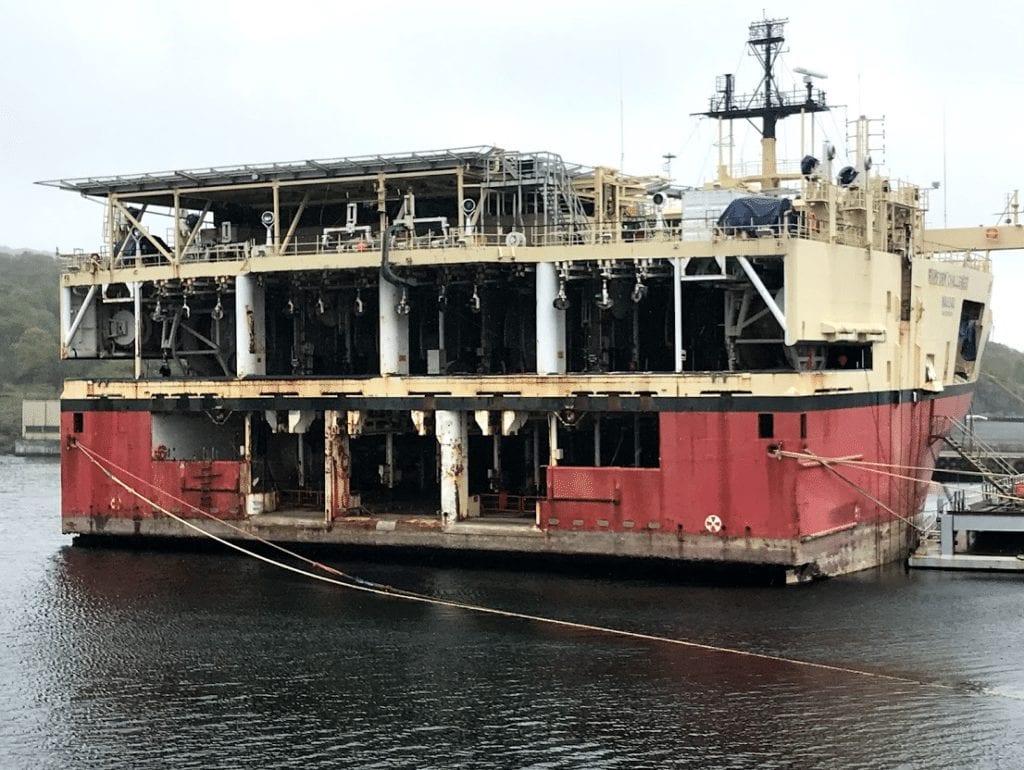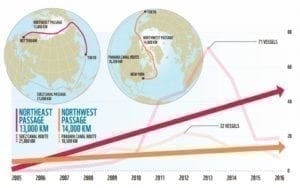Warmer climate and less ice in the Northeast passage means the Suez and Panama canals are feeling the pressure. A possible gain for the climate is that the world’s 50.000 vessels and tankers will save a few kilometers travel distance.
The Dutch explorer Willem Barentsz was the first to test the idea in 1594. Back in the day it was the fight against the Portuguese trade monopoly in Asia that was at stake. Barentsz and following attempts failed. The Dutch ended up doing whale hunting in the waters of Svalbard in stead.
Oil and gas first step
While the US and Canada has more or less left the idea of oil drilling in Arctic water, Russia is gearing up. New ports, airports, hundreds of kilometers of oil pipes and new cities will emerge in near future according to their plans. State owned Gazprom, Lukoil and Rosneft will get generous conditions from the Russian authorities. This is the first step to establish the Northeast passage as an alternative to Suez and Panama. The entire route is within the Russian exclusive economic zone.
What will happen?
Energy companies will get tax incentives to extract oil and gas. A five per cent tax is offered the first 15 years to take up the estimated 37 billion barrels of oil.
In the Eastern part of Arctic near Canada’s Beaufort Sea they will get even better conditions. Zero tax on extracting the first 12 years of operation. Three huge offshore projects are already approved, according to Russia’s minister of natural resources and the environment, Alexander Kozlov.
Only one oil producing offshore project is in operation today in the Russian Arctic, the Prirazlomnaya platform, in the Pechora sea.
The tax legislation bill was passed January 30.
The Vostok project will the “wold’s largest” and includes a port, two airports, 800 kilometers of pipe and 15 (!) new cities in the Vankor region. It is the first step of Russia’s big plan to develop Arctic oil extraction.
From an environmental point of view, it is true that shorter distance means less emissions (made possible by the very same emissions). However, oil spill in Arctic waters is much more complex than in, let’s say Gulf of Mexico. Harsh conditions, low temperatures and ice can make oil spill equipment very difficult to use. The Arctic is very vulnerable to oil spill. The ecosystems there are sensitive to marine pollution because of their dependency to the ocean as a source of food.
The Arctic silk road
China also sees huge advantages saving a few thousand kilometers of transportation as the ice melts. New opportunities for energy is probably even more important. In the Kara Sea the Chinese are drilling for gas. Last five year Chinese vessels have travelled the Northeast passage in what is coined the Arctic silk road.

Also read: Can these vessels go without CO2 emissions?
Like I said. 50,000 vessels are working around the clock to deliver everything we need. It represents 2 per cent of global climate gas emissions, similar to air traffic. The industry aims to find zero emission solutions.
Parts of the passage is ice free only two months a year. But this is changing every year. Financial Times explores this and also show where Russia has established their military bases along the route.

The northeast passage routes. Illustration: WWF
By 2024 the plan is to transport 80 millions tonnes along the route. President Putin presented in May 2018 several goals that Russia should reach by then in the so called May decrees. The Northeast passage is one these goals.
Cover photo: An orthodox priest is blessing the ice breaker and supply ship Fyodor Ushakov in Murmansk, November, 2017. Credit: Lev Fedoseyev/TASS (Getty Images).


